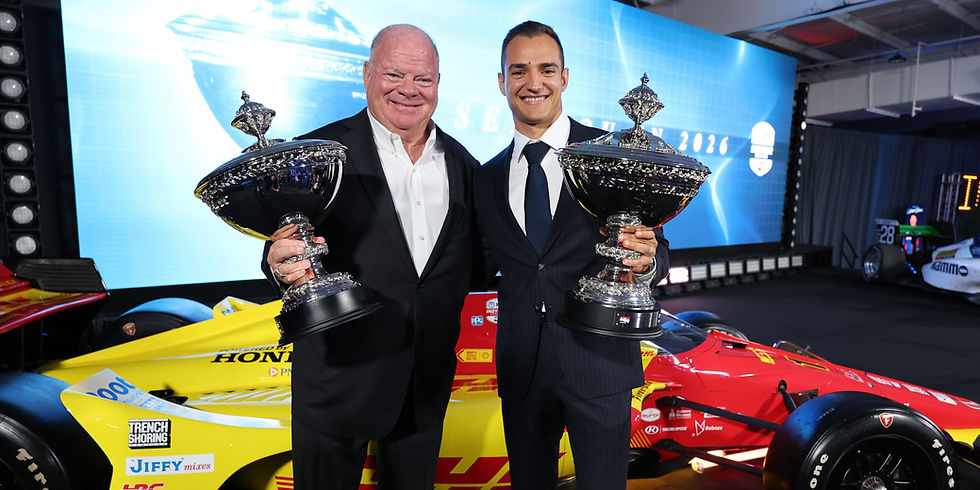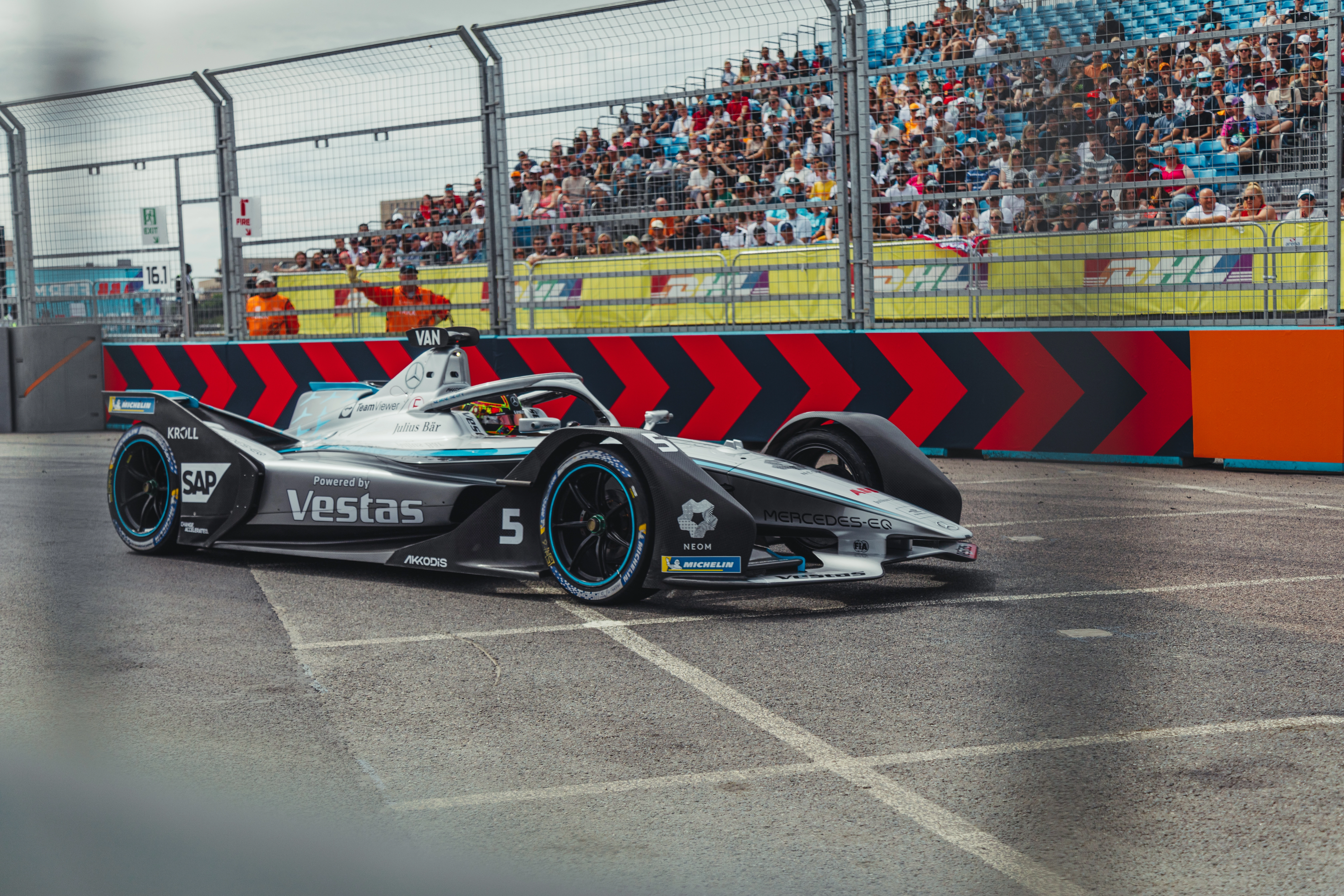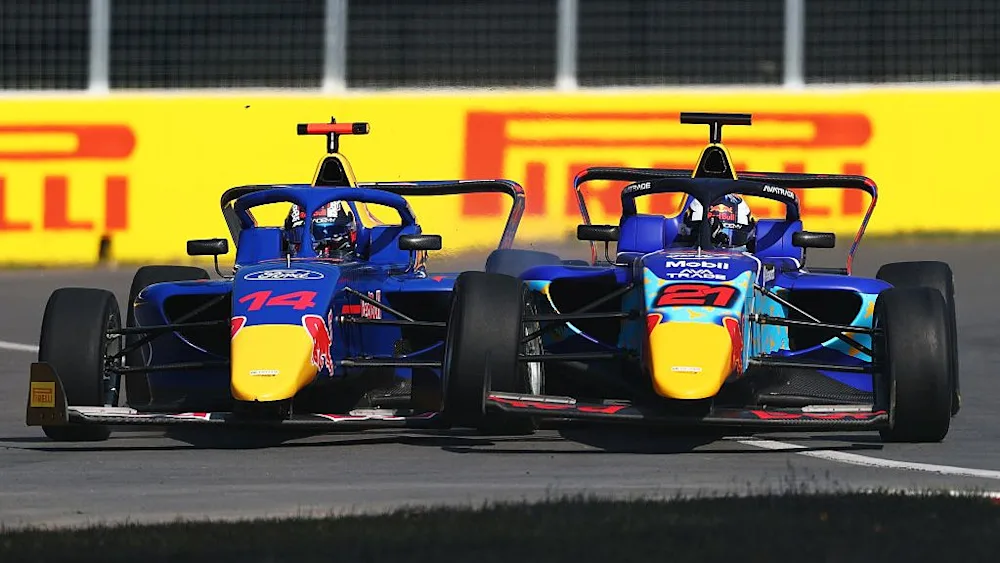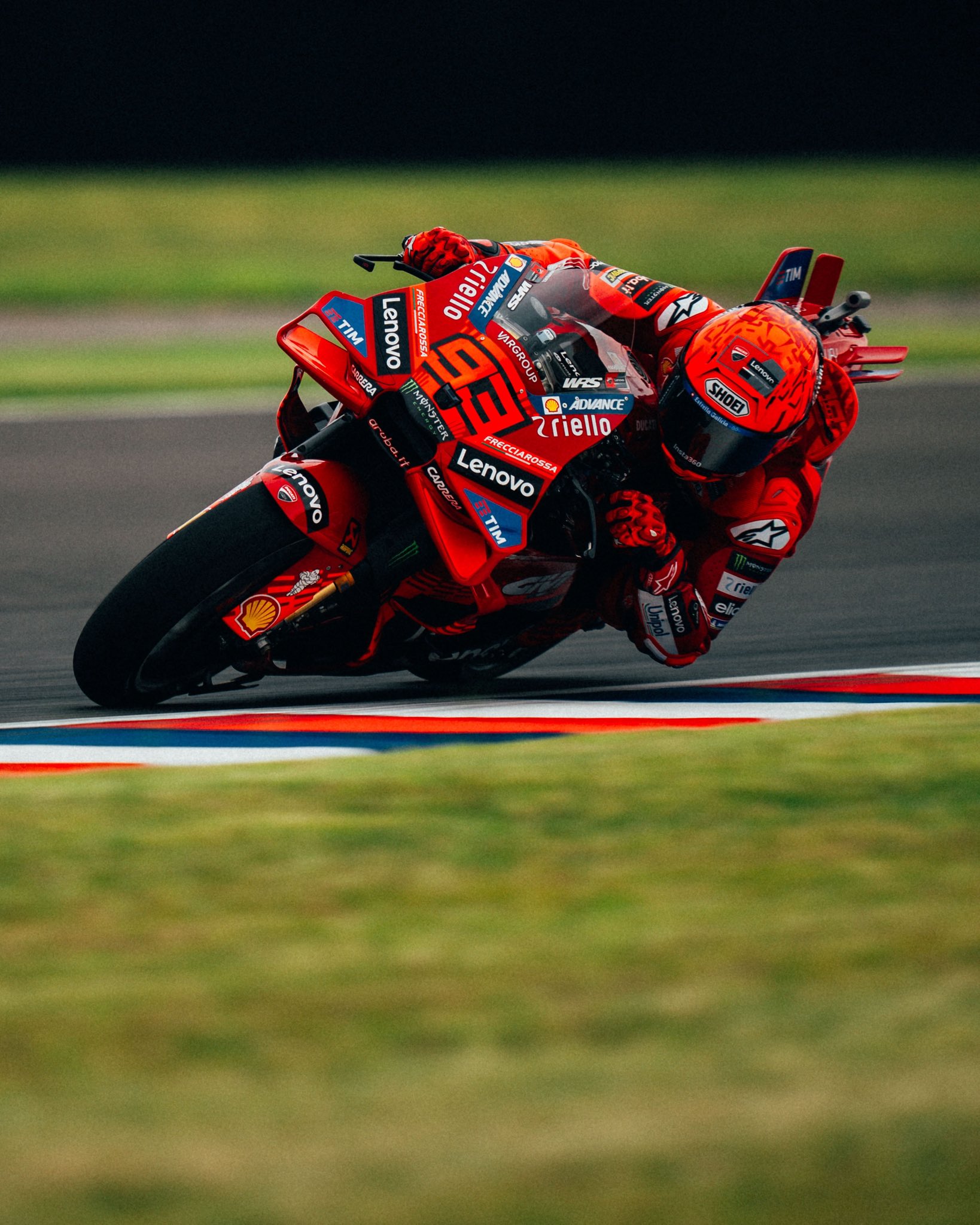Inside view: The two-sided toll of the compact IndyCar schedule
- Archie O’Reilly

- Jun 19, 2024
- 9 min read
Updated: Jan 6, 2025
Written by Archie O’Reilly
There will have been a gulp from a portion of the IndyCar paddock upon the release of the 2025 schedule last week. Others will no doubt have been beaming at the challenge that awaits.
After a staggered start to the season, the series will be on track 14 of 18 weekends from the start of May to the end-of-August season finale at Nashville Superspeedway. That level of congestion is far from unfamiliar to the IndyCar circus after the period it has recently endured since the start of on-track action at the Indianapolis Motor Speedway (IMS) last month.
The series now heads to Laguna Seca this weekend after its first off-weekend since the start of five successive weekends of on-track action, encompassing the Grand Prix of Indianapolis, the Indianapolis 500 fortnight, Detroit and Road America. That took some toll on the paddock and, likely not uncoincidentally, saw tensions rise among drivers.
And the compact calendar only ramps up even more next year with tight television windows to appease in a bid to avoid clashes with other major sports.
In addition to the five successive weekends on track around the Indy 500 remaining on the schedule, next July will see five races run across four weekends. That period in the height of summer commences at Mid-Ohio Sports Car Course, moving straight to the Iowa Speedway doubleheader, then to the streets of Toronto and across the country to Laguna Seca.
Between the start of May and the end of July in 2025, there are only two off-weekends.
The Indy 500 period sees the Barber Motorsports Park event moved into May, running the week prior to the Indy GP. This means there is only one race coming directly after the Month of May; the IMS events only marking the start of the recent hectic period this year has left lots of teams and drivers fairly jaded heading into the midpoint of the 2024 season.
It was tough enough getting on track in Detroit for opening practice less than five days on from the green flag even having flown for the rain-delayed Indy 500 without having to then roll on to Road America, then a hybrid test on the Milwaukee Mile, immediately after.
The Indy 500 fortnight on its own is emotionally taxing enough without having to head straight back into racing action - on a polar opposite track - a matter of days later. There could well have been a correlation between this tight turnaround and the chaotic Detroit weekend, including pit lane run-ins and an incident-filled race.
“Obviously I think rolling off of Indy and into Detroit was mentally tiring I think for everybody,” AJ Foyt Racing’s Santino Ferrucci, involved in one Detroit pit lane kerfuffle with Andretti Global’s Kyle Kirkwood, said. “You’re going into a tight street course. Racing immediately after Indy is always tough. It would be nice to have the week off.
“Obviously with the sports this year, it’s very technical to do. With TV, there’s a lot of things behind the scenes that we don’t unfortunately get the benefit of. But I think everybody’s looking forward to getting through this race weekend [at Road America], going through the Milwaukee test, then sitting at home on the couch.”
For some, it went beyond five successive weeks of commitments. Chip Ganassi Racing trio Scott Dixon, Alex Palou and Kyffin Simpson headed straight to the 24 Hours of Le Mans and will have been in a car for seven straight weekends by the time the Laguna Seca IndyCar weekend concludes. The same applies for Juncos Hollinger Racing’s Romain Grosjean.
Dixon spent the three off-days in the second week of the Indy 500 campaign juggling preparation for the upcoming IndyCar races on the simulator while gearing up for Le Mans. With the schedule distributed as it is, time off comes at a premium until the painstaking off-season rolls around.
Rahal Letterman Lanigan’s Pietro Fittipaldi had a similarly packed deal from Barber through to Road America. The Brazilian spent the ‘spare’ weekend between the Alabama race and Indy GP fulfilling his duty as Haas’ Formula 1 reserve driver.
“It’s really tough,” Fittipaldi said. “It’s been super exhausting. I still have my reserve driver role with Haas… when there was a week off, I was at the Miami GP. My sort of six weeks in a row is actually like seven weeks in a row of back-to-back racing. It’s a lot.”
Drivers and team personnel are living their dreams by being a part of the IndyCar. But that isn’t to say it doesn’t come at some cost in the height of the season.
Possibly even more so than the drivers, there is significant stress placed on crew members through the field. They have to sacrifice time at home and with their families, for instance, while travelling, working to turn the cars around race to race or, in the case of Indy, refine them meticulously throughout the two weeks. It is high pressure.
“The team does a lot more work than the drivers,” Fittipaldi said. “The mechanics and engineers, they’re always putting in so many hours just getting ready for either a test day or race weekend.”
And while the fatigue probably blights the lower-resourced teams to an even greater degree, even the best in class can feel the effects of the grind of such a tight schedule. Though it also allows the cream to rise to the top.
One particular task comes via the limited numbers of chassis available to teams through the field. This offers up the challenging work of trying to maintain the highest possible level of service across all components while having to frequently flip between road course, street course and oval cars.
Executing everything faultlessly with so much on teams’ plates is a big task. That is why the Team Penske drivers have heaped so much praise on the tireless work of their crews in the last month. Their deep ranks have allowed them to reach the point of locking out the Indy 500 front row, winning back-to-back Indy 500s and sweeping the Road America podium.
“It’s been tough,” Penske’s Indy 500 pole-sitter Scott McLaughlin said at Road America. “Tough from May to here. The boys have been on the road for a long, long time. Huge props to them and the hard work that’s gone on behind the scenes. It’s not stopping.”
But as hard as the work may be for teams, from training to preparing the cars, these are the situations that many in motorsport thrive within and have worked their lives to be involved in.
One top IndyCar mechanic told DIVEBOMB that thrashing to try to produce a competitive car is what they love to do more than anything. And while the hours can add up, the rewards that are strived for can make the strain bearable and are worthwhile in such a competitive field with some of the very best in their profession in the world.
There are processes in place to make congested periods a whole lot easier to emerge through in successful fashion and with as limited toil as possible. Implementing management strategies such as forging service plans in advance has been crucial in teams coming through the recent period in a fruitful fashion.
Ultimately, such planning helps to diminish the feeling of overwhelming strain when it comes to the thrash of turning cars over to a different spec most weekends. Getting back to the workshop after a race weekend is made a whole lot easier this way as preparation for the next can commence immediately and relatively seamlessly.
It is a very two-sided deal. And efficiently powering through this sort of period can be the difference in mounting a championship charge or securing a Leaders’ Circle contract and falling short of the mark.
Felix Rosenqvist was another driver to weigh in on the toll of the “long stint” through May into June, outlining the feeling of a non-stop nature to the season for his Meyer Shank Racing team. As much as they love their occupation, there is a certain sense of relief at the conclusion of such a busy period.
“This is a team sport,” Rosenqvist said, speaking ahead of Road America. “Even if the driver does the most physical and maybe mentally demanding job on race day, we actually have the opportunity to recover pretty well. I’ve been home here in Indy for two days now, going to the gym, eating well, resting, sleeping well.
“Everyone that works on the pit crew, engineers… the minute we finish the race in Detroit, they’re already working on Road America, preparing the car setup, the gears. The mechanics have to rebuild the car, take it apart, maybe a new engine that has to go in.
“The amount of infrastructure and logistics behind the scenes, they work their a** off every week. Especially when you have a stint like this, also ending with a test at Milwaukee, I think they’ll be pretty happy when it’s done. It’s all about managing. You have to see it as an endurance race itself. It’s like a mini-championship. These five weeks are going to be tough.
“You just have to try to get through and not make mistakes. Mistakes come when you’re pushed to your limits mentally and physically. That’s when you can get sloppy. Everyone on my car has done a super good job. I know it’s been tough on them.”
Any rest time in this period has proved a virtue for teams. They have been in some form of management mode since the Indy 500 and have finally had a chance to properly unwind ahead of Laguna Seca before another off-weekend heading into a pre-Olympics triple-header of four races with the brand-new hybrid power unit.
Drivers have their own way of managing these periods too.
“Mentally it’s a lot,” Ferrucci said days after the Indy 500 as he embarked on a road trip home before almost instantly heading to Detroit. “Honestly, everyone makes fun of me for driving everywhere. I’m not going to lie, there’s nothing more stress-free than an open road and no distractions.
“For me right now, to be driving home from Indy with the dogs and with everybody, it’s like a nice break from constantly checking your phone or worrying about sending emails or doing this or doing that. It’s calming to me.”
Ferrucci’s Detroit weekend was not exactly calm, with the altercation with Kirkwood and a war of words - the line overstepped at times - exchanged with Colton Herta too. He took more time to refresh ahead of Road America before a final push before the full week off.
“Having a couple days to rest and sleep, I finally got more than eight hours at home this week, which was awesome,” Ferrucci said at Road America. “To come up here and do a full reset, I feel like I have a lot more energy. I can see it in the team - my Texas guys got to go back to Houston. I was very happy about that.”
But not all drivers actually do mind the congested period. Many relish it - the Le Mans contingent emphasising this - and want to be in some car as often as possible.
For one, Fittipaldi had worked his whole racing career to date to get a full-time IndyCar opportunity after two part-season stints with Dale Coyne Racing alongside primarily a sports car career. Finally getting his full-season break this year, he is desperate to be in an Indy car as much as he can be.
“I’m super happy that I’ve been given this opportunity,” Fittipaldi said. “For me, the more races the better. This year I got called to do the Daytona 24 Hours on a Friday afternoon, basically arrived there at 3am, got in the car, went straight to green flag racing. I’m the type of guy, the more racing the better.”
Momentum can be the friend of drivers too - built up more easily with so many successive weekends on track. For those on a roll, having a high frequency of races is favourable. And the post-Indy 500 run was also a good chance for those who had a tough Month of May to get back on the horse and raise team morale.
“Luckily, unluckily for me, there wasn’t a lot of fatigue because I didn’t do a lot of the race,” Herta said after crashing out of the Indy 500. “It sucks. What really sucks is having to go out there and watch everybody have fun, race for position. You’re just in the back trying to pick up spots.
“Overall, the best remedy for it is getting back to the race car. It’s nice to have a nice back-to-back weekend. For me, it was personally because of having a bad 500. It’s nice to get back with the engineers working on something brand-new and get going on a new weekend.”
And ‘momentum’ is a watchword that goes in several directions. As difficult as such a jam-packed season can be for those involved, it can be a sacrifice for the greater good of the series and its quest to build momentum by way of growth.
The fragmented start to the 2025 season - with three three-week gaps between the opening four races - is frustrating for all. And a six-month campaign with an August end, while justifiable in maximising viewership rather than going up against the likes of the NFL with the new FOX Sports media rights deal, is not ideal.
Such a long off-season is not so conducive to building hype for the series. But given the constraints that IndyCar has to follow, a full-push few months when the season does get going in earnest could help elevate it to new heights.
Nothing will ever be ideal with a calendar. But the world of motorsport is one that relishes being pushed to the limit. That is where you see the very best of people within the wild and wonderful world of this sport.




















Comments